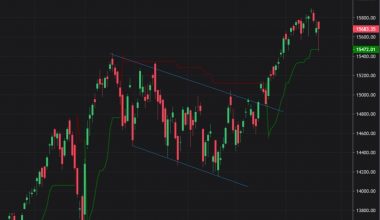Interest rate is a major macro fundamental that impacts stock markets. As Warren Buffet famously said,
“interest rates are to asset prices like gravity is to apple.” Softening interest rates are fodder for the bulls. The peaking of interest rates and expectations that it will trend down have played a major role in the ongoing global bull market. However, the complexity of the global economic scenario, and the inflation trends in the mother market US, have clouded the interest rate trajectory.
This year began with market expectations of six rate cuts in 2024. The Fed’s ‘dot plot’ indicated three rate cuts. The near consensus in the market was that slowing economy and the weakening labour market will give enough headroom for the Fed to cut rates. Hard landing of the US economy was completely ruled out by the market and soft landing became the base case scenario. But the US economy continues to surprise on the upside. Scenarios have evolved from fear of hard landing to hope of soft landing to the new reality of no landing now. US growth is robust, labour market continues to be tight, and inflation is becoming stubborn at lower levels. Market expectations of rate cuts have continuously trended down from six at the beginning of this year to two rate cuts now. The market now feels that the rate cuts will be backloaded with the first cut coming only in September. Consequently, the US bond yields have shot up. The 10-year yield has spiked from around 3.82 percent in early February to above 4.6 percent now by mid-April.
Rising US bond yields triggers foreign portfolio outflows from emerging markets like India. Yield of 4.6 percent from the safest asset class in the world is a strong attraction for foreign portfolio investors. FPI selling impacts the Indian stock market pulling it down. But the traditional correlation between FPI selling and the Indian market trend is no longer as strong as it used to be. FIIs are no longer the powerful market players they were in the past. Now the market is dominated by DIIs, Indian HNIs and retail investors. In the tug of war between FIIs and DIIs the latter has been winning consistently. This new trend of Indian investors calling the shots is a healthy and positive development.
Sustained FPI selling provides opportunities to investors. FPI behavior is excessively influenced by external factors. When US bond yields rise, they sell in emerging markets. FII’s major holding are in largecaps and, therefore, large scale FII selling puts pressure on largecaps making their valuations attractive.
In India inflation is trending down. March CPI inflation declined to 4.85 percent. More important, the core inflation is only 3.3 percent. Since the inflation rate is well within RBI’s tolerance band, the MPC can afford a rate cut. But the growth momentum in the economy is strong and RBI’s growth projection for FY 25 is 7 percent. As the RBI Governor observed, “the capex cycle is getting broad based and capacity utilization is improving.” In this optimistic scenario, the MPC will not be in a hurry to cut rates. The fact is that the Indian economy now doesn’t need a monetary stimulus now and, therefore, policy rates are likely to remain high for a few more months. The two rate cuts expected this year are likely to be backloaded.







